Have you ever gone birdwatching and seen a bird you didn’t recognize? With so many different types of birds in the world, this is a common experience — especially when you consider differences like sexual dimorphism and seasonal plumage. If you’ve recently seen a small black bird with a white belly and didn’t know the species, continue reading below. You’ll meet some of the most likely species, as well as a few rarer ones, that might be your bird.
Ready to learn more? Let’s dive in!
5 Common Small Black Birds with White Bellies
There are dozens of species of bird in the world that sport black and white markings. However, not nearly as many sport the specifics of being small, with mainly black bodies and white bellies. Below are five species that you most likely encountered.
1. Eastern Kingbird
The eastern kingbird is a large species of flycatcher native to North and South America. They are long-distance migrants that can create flocks as large as 60 individuals. During the spring and summer breeding season, they are found in the northern parts of their range. This includes much of the continental United States as well as southern Canada. They migrate along Mexico and coastal Central America before settling in central South America for the winter.
Eastern kingbirds can thrive in a variety of habitats. If this is the bird you spotted, you most likely saw it near water. They often choose to settle in forests and open fields near freshwater sources, such as ponds and lakes.

Eastern kingbirds are common in forests near water.
©iStock.com/Emily Jackson Photography
2. Hairy Woodpecker (Female)
Male hairy woodpeckers will have a spot of red on their heads. However, a female of the species is a small black bird with a white belly. Their backs aren’t entirely black, as is the case with the eastern kingbird, however. Instead, female hairy woodpeckers sport white markings on their feathers and faces. Some may also sport a white stripe down the center of their back.
Hairy woodpeckers are a resident species in North America. They can be found throughout much of the continental areas, excluding the far northern coasts of Canada. Due to their behaviors and diets, they are common in mature woodlands.
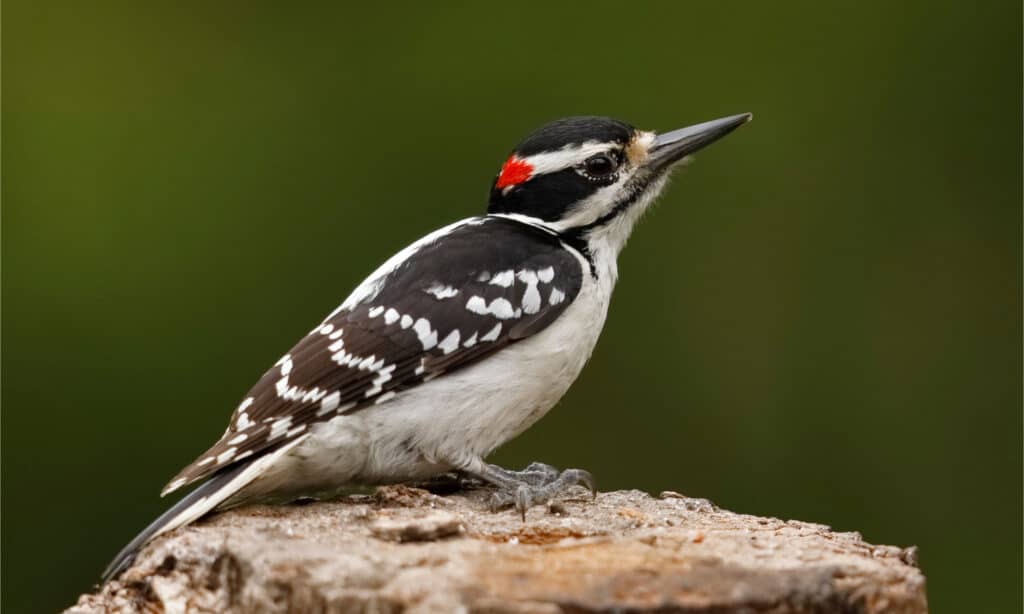
Female hairy woodpeckers lack the male’s red cap.
©Brian Lasenby/Shutterstock.com
3. Downy Woodpecker (Female)
The downy woodpecker closely resembles the hairy woodpecker, although they often appear smaller in size. Because of this, females of this species may also fit the bill of the bird you saw. They are black with white markings and a white belly.
Much of their range overlaps with that of the hairy woodpecker, although downy woodpeckers are not found as far south. Much of their territory ends in the southern states of the United States, not branching into Mexico and Central America. They favor open woodlands, especially those located along or near moving water-like streams.

Female downy woodpeckers may be confused with related species, like the hairy
woodpecker
.
©Jim Nelson/Shutterstock.com
4. Black Phoebe
The black phoebe is another likely contender for the small black bird with a white belly you may have seen. This species is small and compact, smaller than a sparrow. They are overall black, although a small portion of their belly is white. South American birds may sport white markings on the wingtips, while northern juveniles may have white wingbars.
Black phoebes are a perching species most often found near water. Much of their population is a year-round resident in the western American regions they call home. Some individuals may migrate short distances.

Black Phoebe birds mainly eat insects that they catch in the air.
©iStock.com/G Parekh
5. Rose-Breasted Grosbeak (Juvenile Male)
Rose-breasted grosbeaks are known for their namesake red chests. However, only males sport this red marking, and only adult males. Females of this species are brown, while juvenile males have the same black and white markings as their adult counterparts without the tell-tale red breast. Depending on their age, they may have a small red or pinkish mark developing.
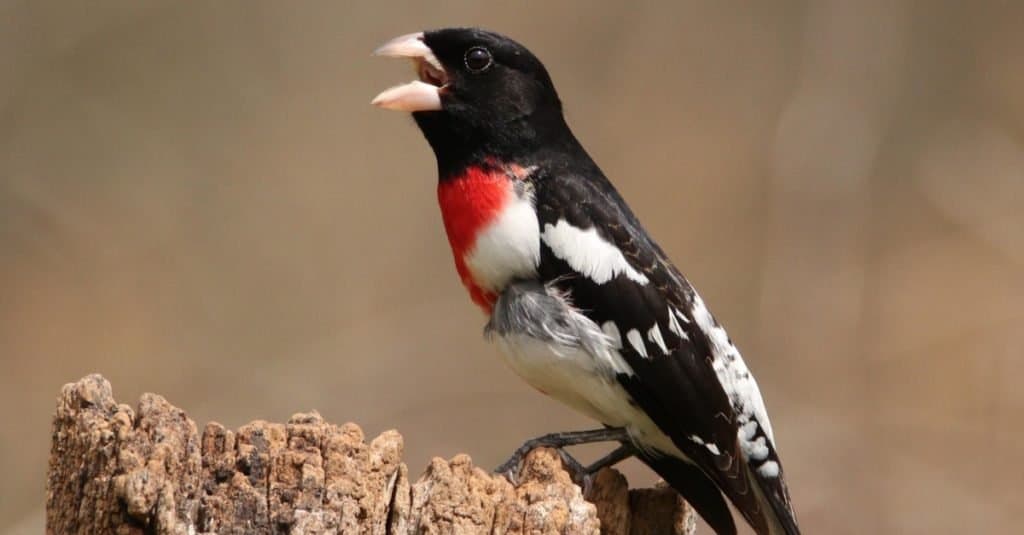
Young males of this species may not develop the red markings on their chests until they are older.
©Mark W. Holdren/Shutterstock.com
3 Uncommon Small Black Birds with White Bellies
Not all birdwatching happens in your backyard. If you’ve recently been out exploring when you spotted the small black bird with a white belly, you may have encountered a less common species than those listed above. Below are three birds that may also match this description.
6. Black-Necked Stilt
The black-necked stilt’s long legs may make it look like a large bird, but the body of the bird itself is small. As a result, this shorebird may have been the small black bird with a white belly that you spotted.
These long-legged birds are found throughout North and South America, with a significant year-round population in southern Brazil. They are abundant near water but may be uncommon elsewhere.
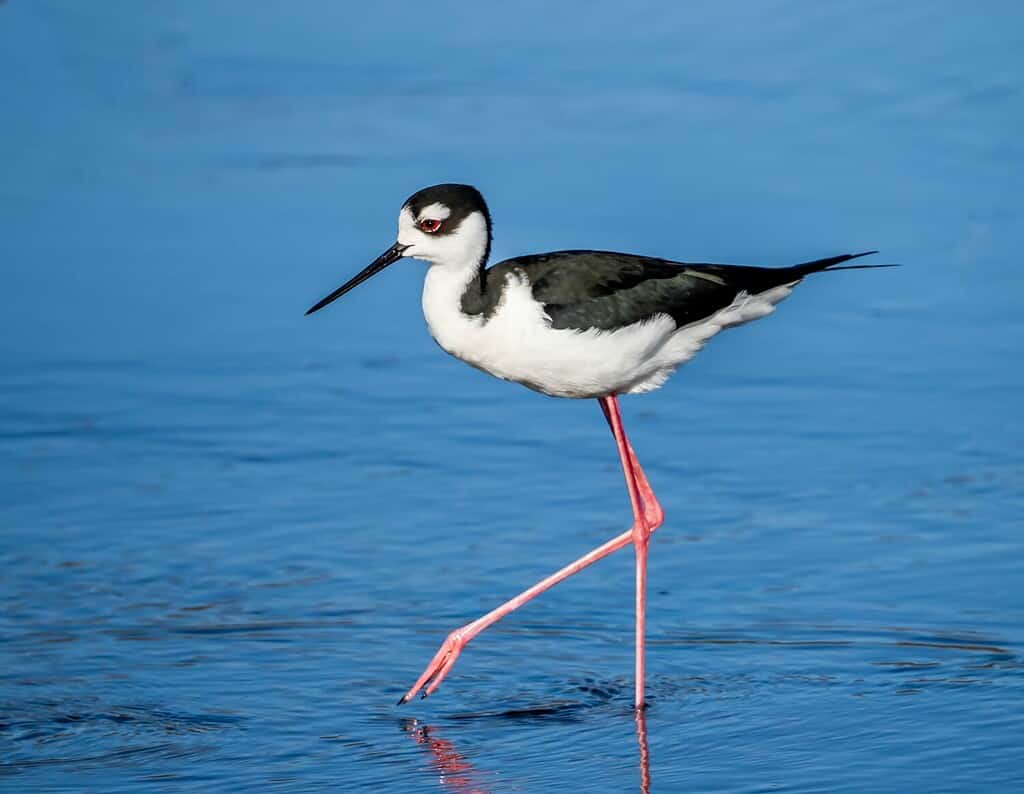
This species can be easily recognized by its long, pink legs.
©Jim Schwabel/Shutterstock.com
7. Razorbill
Razorbills are likely one of the rarest birds on this list. They are found in a small area in the northwestern Atlantic Ocean, offshore of Canada and the United States New England region. They have a penguin-like appearance and spend much of their time in the water. Razorbills can be identified by their hooked, black bills, which feature a white bar.
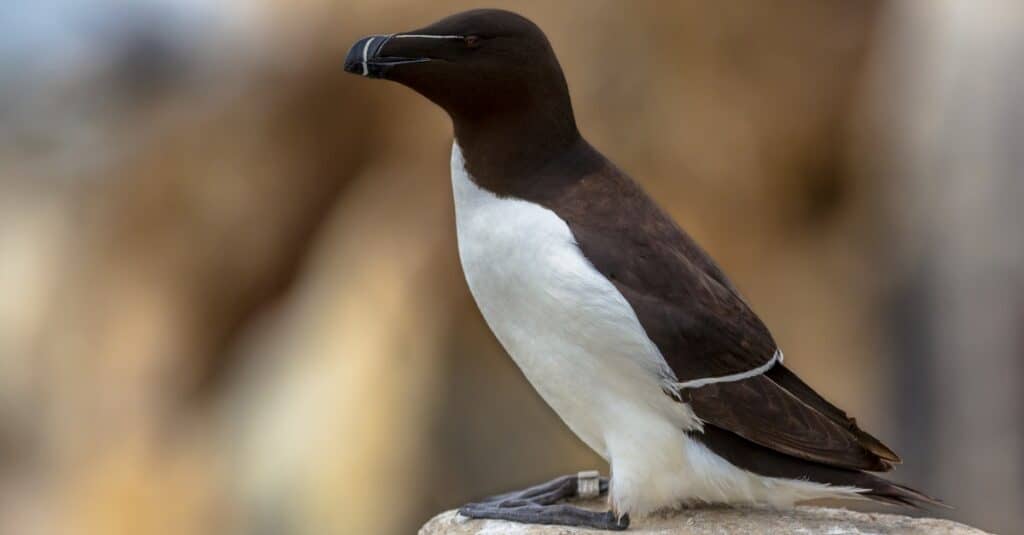
The razorbill resembles various penguin species, although it is not a penguin.
©iStock.com/CreativeNature_nl
8. Black-Crowned Night Heron
Black-crowned night herons are common around water sources throughout North and South America. They are mainly white, although the cap of their head and their backs are blue-black in color. They are a small, compact heron species with smaller legs than relative species and a little visible neck. As juveniles, they are brown and white, with a leaner build.
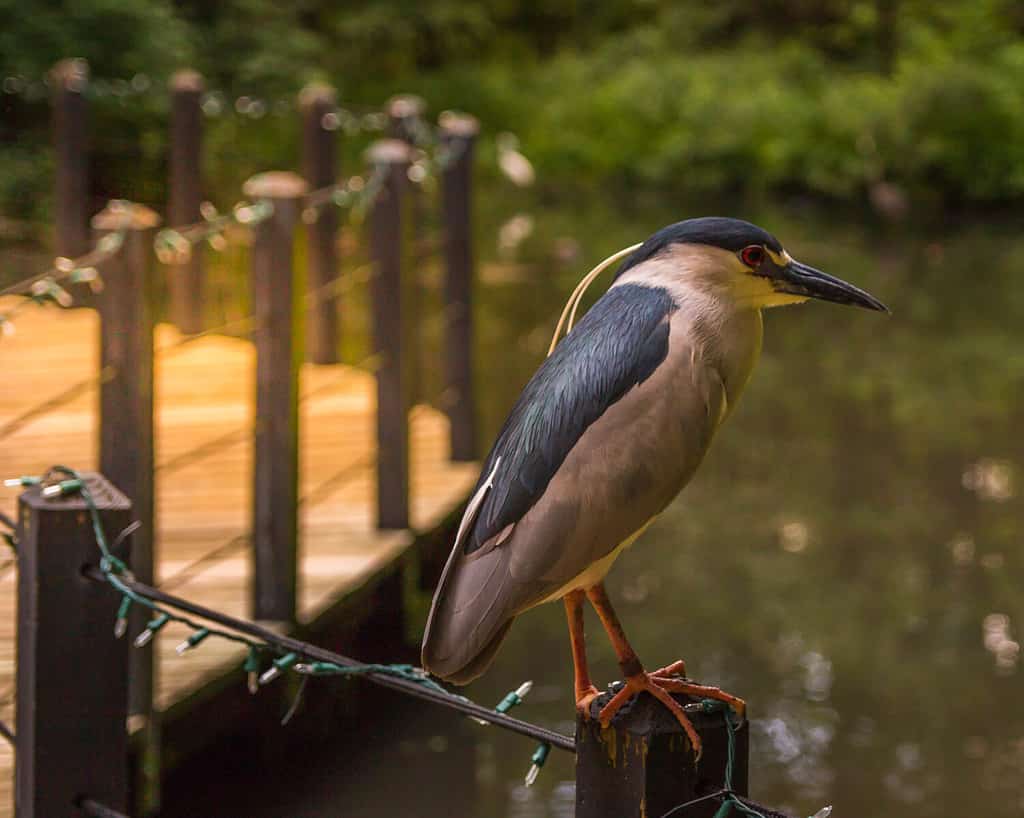
The black-crowned night heron is a small black bird with a white belly.
©Trisha McQuade/Shutterstock.com
The photo featured at the top of this post is © iStock.com/6381380
Thank you for reading! Have some feedback for us? Contact the AZ Animals editorial team.






